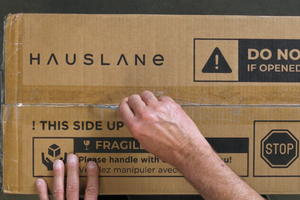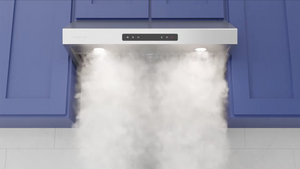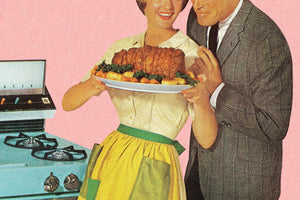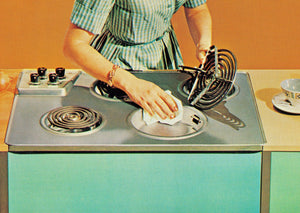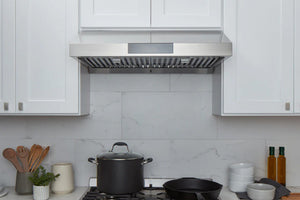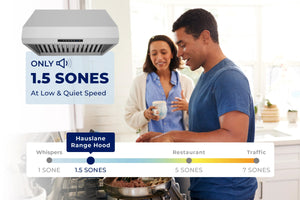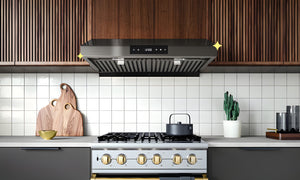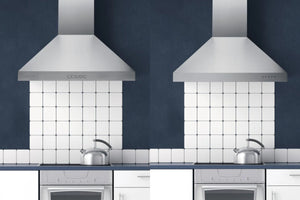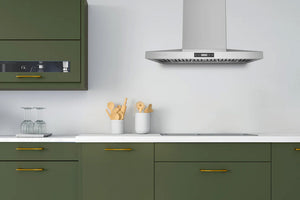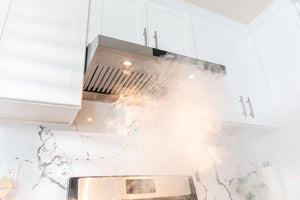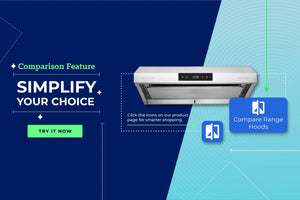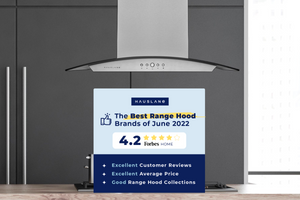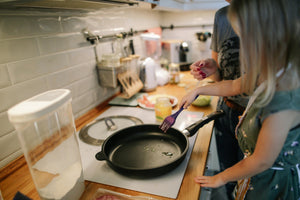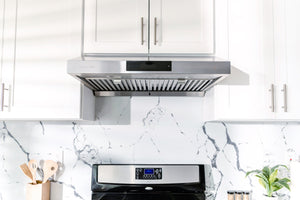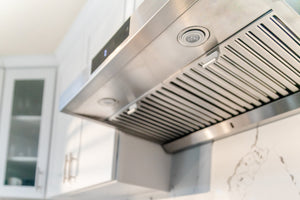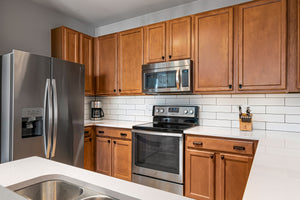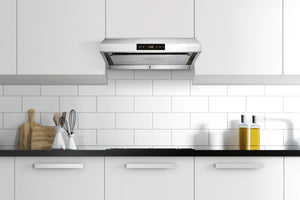TIPS & GUIDES
What You Need to Know about CFM and Its Accuracy Before You Buy a Range Hood
By Hauslane ∙ 5 mins readYou’ve probably heard a lot of talk about CFM, or cubic feet per minute when shopping for a new range hood. You may have also heard of CFM when looking at bathroom exhaust fans. This unit of measurement tells us the volume of air a fan moves in one minute. The volume is described in cubic feet.
CFM can tell us how fast a range hood can move unwanted air out of a room. But there’s more to understanding CFM than meets the eye. Here’s a breakdown of everything you need to know about CFM and performance before you buy a new range hood.

The Basics of CFM
The purpose of a range hood is to keep your kitchen clean and fresh. These appliances suck up fumes and smoke while catching grease particles. The air is then moved through a duct to the exterior of your home. Or if you have a ductless model, the air is cleaned by aluminum filters and charcoal filters then recirculated.
CFM measures the speed of airflow. So, the more CFM a fan (such as an exhaust fan or within a range hood), the faster the unwanted air should leave your home. Sounds simple right?
Turns out measuring CFM is a bit more complicated than you might think.
How to Pick the Right Range Hood
You definitely want a range hood with strong suction power. After all, it’s the key to getting unpleasant odors and fumes out of your kitchen. In theory, CFM should tell you everything you need to know about suction power.
However, there’s an issue. There’s no standard for CFM. That means it can be measured in a variety of labs and testing environments. Without true standardization, there’s no clear way to compare CFM ratings from different manufacturers.
It gets even more complex. You could potentially test the exact same range hood in the exact same environment and get a different CFM reading if you alter a single element (such as the ventilation or opening a window). Plus, how each manufacturer advertises CFM varies a great deal.
You may even find that range hoods rated at 500 CFM have a better performance than 1,000 CFM. So, what’s a home chef to do?
Select your range hood based on your cooking needs. Look for range hoods designed for your most common cooking techniques. At Hauslane, we divide range hoods into the following tiers and cooking techniques:
✦ Tier 1 is perfect for light cooking, heat and smoke, boiling, steaming, poaching. This tier is ideal for ranges with a combined BTU that is less than 25,000.
✦ Tier 2 is suited for everyday cooking, typical heat and smoke, boiling, steaming, poaching, braising. This tier is ideal for ranges with a combined BTU between 25,000 and 50,000.
✦ Tier 3 is ideal for heavy-duty cooking, heat, and smoke; boiling, steaming, poaching, braising, frying, searing, and sauteing. This tier is ideal for ranges with a combined BTU that is over 50,000.
Each of our range hoods has strong suction power and provides optimal performance. We recently put our UCPS18SS to the test with the five different demonstrations shown in this video:
Suction video
There’s no denying that Hauslane range hoods deliver professional-quality suction power. If you’re interested in learning more about finding the ideal range hood for your cooking needs, reach out to our team today.






